
January / February 2023 A PRACTICAL METHOD OF ROTARY SPREADER CALIBRATION PLUS SAVE THE DATE FOR REGIONAL CONFERENCES!
A Publication of the Turfgrass Council of North Carolina







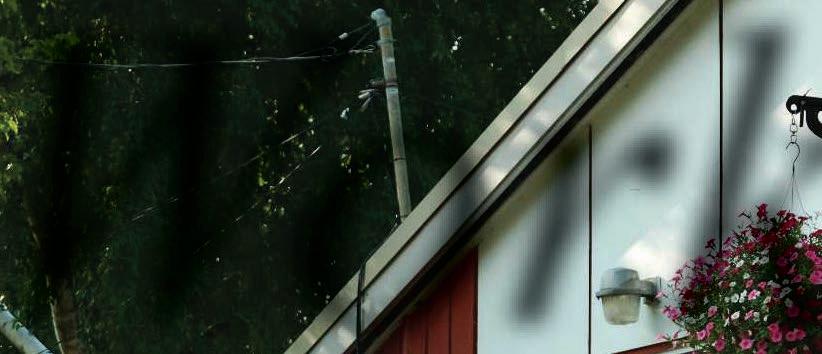

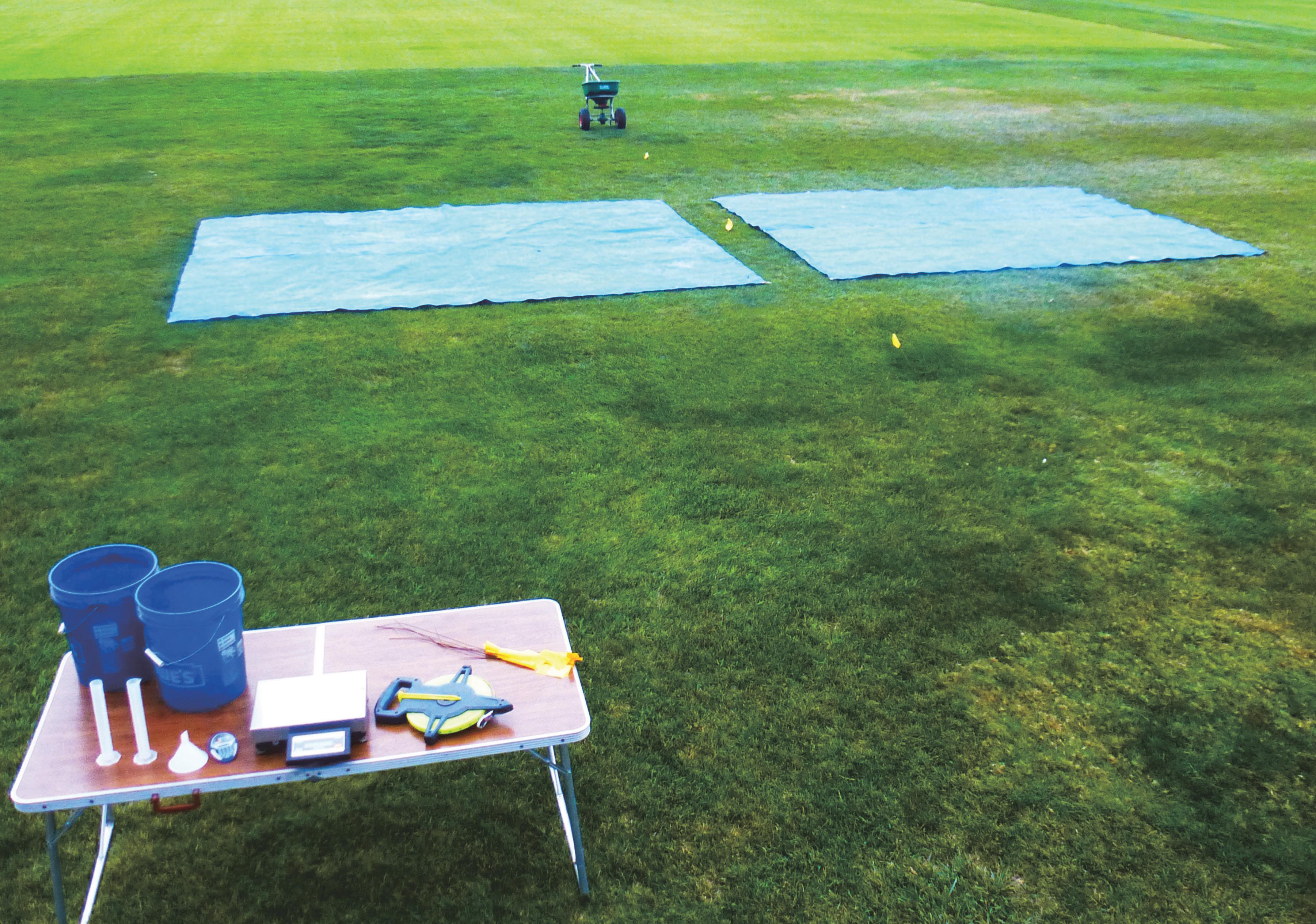
FIND THIS ISSUE, PODCASTS, EVENTS AND MORE: THETURFZONE.COM From the President 6 Calendar of Events 7 TCNC Deluxe Members 8 NC State Turf Team 8 Welcome, New Members 9 NCCTP Program 28 Index of Advertisers 31 MORE FEATURES January / February 2023 Table of Contents 10 4 North Carolina Turfgrass www.ncturfgrass.org January / February 2023 10 COVER STORY A PRACTICAL METHOD OF ROTARY SPREADER CALIBRATION

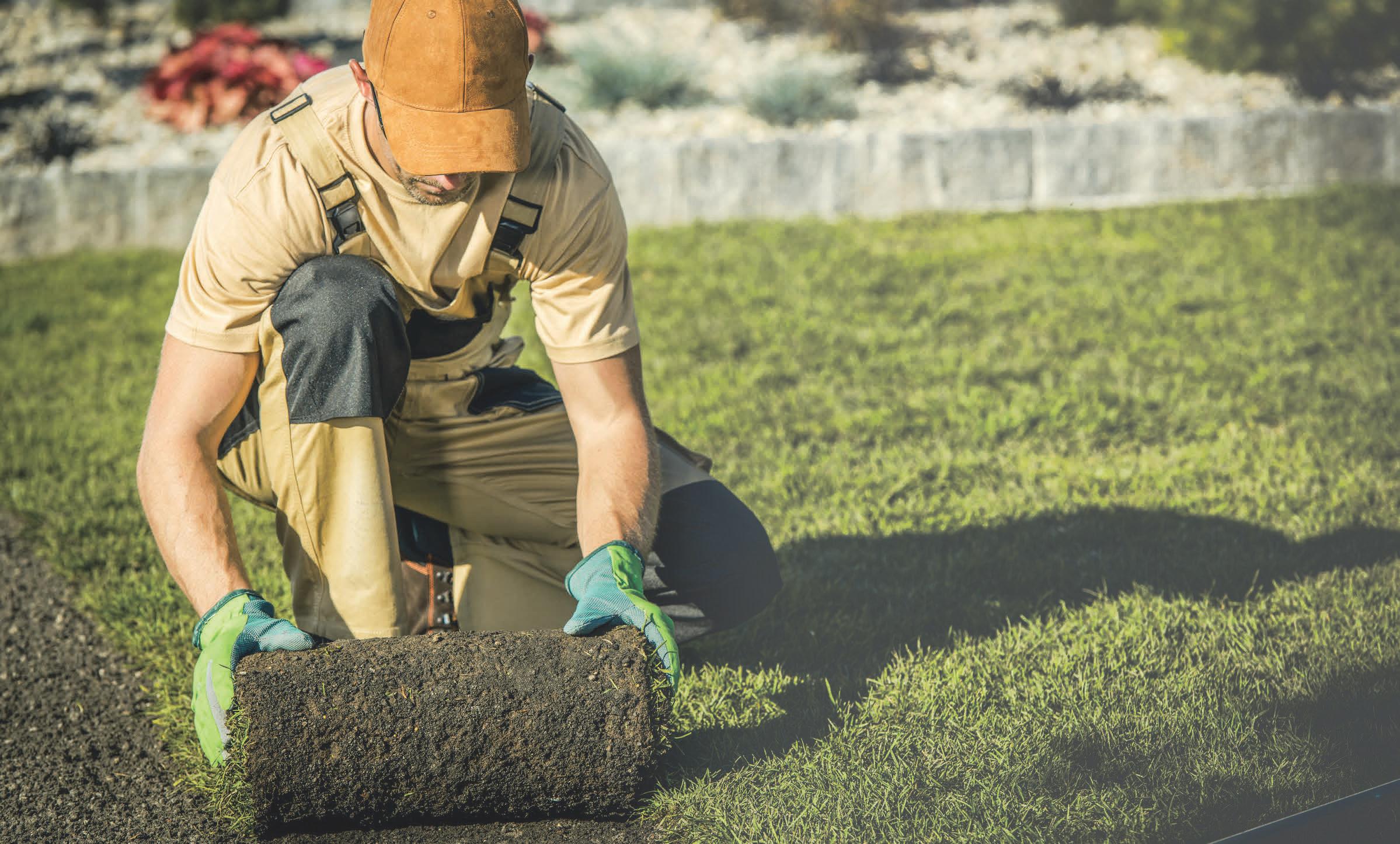

WE’VE GOT YOU COVERED CARY 1900 N Carolina 55 Cary, NC 27519 919-836-0492 CHARLOTTE 12600 Downs Cir Pineville, NC 28134 704-525-8873 RALEIGH 1225 Farmers Market Dr Raleigh, North Carolina 27603 919-836-0492 MOORESVILLE 1060 River Highway Mooresville, NC 28117 980-444-2347 HENDERSONVILLE 583 Jeffress Road Mills River, NC 28759 828-681-5000 Discounted Wholesale pricing Expedited Delivery options Place your orders 24/7 See your purchase history Fresh from OUR farms Yard Area Calculator
2022 wound down, the TCNC Board of Directors held a strategic discovery and planning session in Wilmington, NC. Throughout the last two years, our Board meetings have been online. This was our first in-person meeting since 2020 and we were able to accomplish a lot.
The discussions centered on the value that membership brings to each of you, our partnerships, and the green industry in North Carolina. Over the weeks and months ahead, you will begin to see the value of your membership working for you in many positive ways.
One of the conversations that really struck home with us is how important it is for our turfgrass community to learn, serve, and connect both professionally and for fun. With that in mind, you will be seeing and hearing from us throughout 2023 with these opportunities. Come join us, stay connected on social media, check your emails, attend our events, and even consider volunteering.


A FEW HIGHLIGHTS FOR 2023:
• The Annual General Meeting is in-person this March! Keep an eye out for the Save the Date.
• The Knowledge Series 2023 continues online and in-person. We will focus on some of the more difficult credits to obtain.
• The NCCTP program will be easier to access and certify.
• Collaborations with the NC Green Industry Council to create a comprehensive legislative agenda.
• Meet-ups throughout NC for fun and community involvement I am appreciative of the time, talent, and energy our Board dedicates to TCNC each year – Brian, Gene, Greg, Jonathan, Shaun, and Wil – THANK YOU!! Please, come meet up with us this year at events, in person and online. We believe the best in the green industry are at TCNC!
Sincerely, Kevin Herrmann
TCNC President
As 6 North Carolina Turfgrass www.ncturfgrass.org January / February 2023 From the
North Carolina Turfgrass is the official publication of the Turfgrass Council of North Carolina 110 Horizon Drive Suite 210 Raleigh, NC 27615 919.459.2070 Fax 919.459.2075 www.ncturfgrass.org EXECUTIVE DIRECTOR Marcy Cottle info@ncturfgrass.org 919.459.2070 Published by: Leading Edge Communications, LLC 206 Bridge Street Franklin, TN 37064 615.790.3718 Fax 615.794.4524 info@leadingedgecommunications.com TCNC OFFICERS PRESIDENT Kevin Herrmann Fairway Green Inc. Raleigh, NC VICE PRESIDENT Wilson Sutton Falling Creek Golf Club Kinston, NC PAST PRESIDENT Gene Queen Nature's Select Winston Salem, NC TREASURER Jonathan Richardson, NCCTP NCCTP Chairman Green Resource Dunn, NC DIRECTORS Brian Beane Southern Turf Winston-Salem, NC Greg Harris Leap Frog Land Care, Inc. Cary, NC Shaun Kerr Gates Four Golf and Country Club Fayetteville, NC LEARN, SERVE AND CONNECT
President
Calendar of Events
he NC State Turfgrass faculty are planning several regional, half-day turfgrass conferences in early 2023. In addition, the 4-day Turfgrass Short Course will be back in spring 2023. So, mark your calendars. Registration for these events will be posted in early 2023.


All claims based on
results from National Turfgrass Evaluation Program (NTEP) trials & Oklahoma State University. Visit our website for full reports.
See Tahoma 31 in the Transition Zone for yourself at:
Brook Hollow Golf Club, Dallas, TX (fairways, tees, roughs)
Chillicothe Country Club, Ohio (fairways)
Liberty National Golf Club, New Jersey (driving range tee)
Naval Academy Golf Club, Maryland (fairways, tees)
Congressional Country Club, Maryland (8-acre driving range)
Southern Hills Country Club, Oklahoma (collars)
A
7
Publication of the Turfgrass Council of North Carolina
Plant Tahoma 31 further north for a strong base in the winter that fights wilt in the sumner. COLD Thick, dense turf. ¼ to ½-inch mowing height for tees, fairways. PLAYABILITY Use less water. Takes 18% less water than TifTuf. DROUGHT Blue-green most of the year. Golden in dormancy. Earliest green-up for spring color.
Rated #1 for beauty and resilience. Heals fast from divots & wear.
Got trees? Handles up to 63% shade. SHADE
COLOR
QUALITY
research
Your New Go-To Grass CAROLINA TURF FARMS PO Box 850, Raeford, NC 28376 910-875-6141 ncsodman@carolinaturffarms.com carolinaturffarms.com READ MORE AT www.turffiles.ncsu.edu/2022/11/hold-the-dateregional-conferences-and-short-course/ Turfgrass Short Course April 24 – 2023 ( RALEIGH ) Wake / Johnston Counties Regional Conference February 23, 2023 New Hanover County Regional Conference ( MORNING ) March 1, 2023 Guilford County Regional Conference February 27, 2023 New Hanover County Regional Conference ( AFTERNOON ) March 1, 2023 T
Developed by the
turfgrass
experts at Oklahoma State University, Tahoma 31 Bermudagrass pushes the geographic boundaries of bermudagrass into the northernmost reaches of the Transition Zone. Highly cold tolerant, the name “Tahoma” comes from the Native American word that means “frozen water.” Use Tahoma 31 to design golf courses that are beautiful, sustainable, easier to maintain and play great.
The Budd Group The Biltmore Company Barefoot Lawn Care Inc. Carolina Farm Credit Carolina Green Corp. City of Raleigh Parks & Recreation Fairway Green Fayetteville Technical Community College Givens Estates Green Resource Leap Frog Landcare, Inc. Murray's Landscape Maintenance and Horticultural Services Quality Turf Smith Turf & Irrigation Sod Solutions Inc. Southern Ag Southern Seeds Inc Town of Cary Public Works Town of Garner Turf Mountain Sod Inc Vandemark Farms LLC Wake Forest University Weed Man Thank You to Our DELUXE MEMBER ORGANIZATIONS If you'd like to learn more about the Deluxe Membership, please contact the TCNC office at 919.459.2070 or info@ncturfgrass.org. 2022 – 23 Renewal as of 8/24/2022 Don't see your company's name? Renew today at NCTURFGRASS.ORG Companies wishing to support TCNC with multiple members can join as Deluxe Members. Deluxe Memberships can be purchased in one of three tiers: 1–5 employees; 6–10 employees; or 11+ employees. TCNC Deluxe Members 8 North Carolina Turfgrass www.ncturfgrass.org January / February 2023 Matt Martin Extension Associate 910.409.5899 matthew_martin@ncsu.edu Dr. Travis Gannon Assistant Professor 919.515.2647 travis_gannon@ncsu.edu Emily Erickson Crop Science Lecturer 919.513.2034 emily_erickson@ncsu.edu Dr. Susana Milla-Lewis Professor & University Faculty Scholar 919.280.3443 susana_milla-lewis@ncsu.edu Dr. Grady Miller Professor & Extension Specialist 919.515.5656 grady_miller@ncsu.edu Dr. Charles Peacock Professor and Director of Crop Science 919.906.1324 charles_peacock@ncsu.edu Dr. Rob Richardson Associate Professor & Extension Specialist 919.515.5653 rob_richardson@ncsu.edu Dr. Thomas Rufty Distinguished Professor 919.515.3660 tom_rufty@ncsu.edu Dr. Wei Shi Professor 919.513.4641 wei_shi@ncsu.edu Dr. Fred Yelverton Professor & Extension Specialist 919.515.5639 fred_yelverton@ncsu.edu CROP AND SOIL SCIENCES Dr. Danesha Seth Carley Director, Southern IPM Center & Associate Professor 919.513.8189 danesha_carley@ncsu.edu Dr. Terri Billeisen Extension Associate 919.515.7464 tlhoctor@ncsu.edu Dr. Rick Brandenburg Extension Leader 919.515.8876 rick_brandenburg@ncsu.edu Lee Butler NC State Turf Diagnostics Lab 919.513.3878 ebutler@ncsu.edu Dr. James Kerns Professor and Extension Specialist 919.513.4820 jpkerns@ncsu.edu ENTOMOLOGY AND PLANT PATHOLOGY HORTICULTURE SCIENCE www.turffiles.ncsu.edu/people/ NC State Turf Team
The Turfgrass Council of North Carolina (TCNC) serves its members in the industry through education, promotion and representation. The statements and opinions expressed herein are those of the individual authors and do not necessarily represent the views of the association, its staff, or its board of directors, North Carolina Turfgrass, or its editors. Likewise, the appearance of advertisers, or TCNC members, does not constitute an endorsement of the products or services featured in this, past or subsequent issues of this bimonthly publication. Copyright © 2022 by the Turfgrass Council of North Carolina. North Carolina Turfgrass is published bi-monthly. Subscriptions are complimentary to members of TCNC. Presorted standard postage is paid at Jefferson City, MO. Printed in the U.S.A. Reprints and Submissions: North Carolina Turfgrass allows reprinting of material published here. Permission requests should be directed to TCNC. We are not responsible for unsolicited freelance manuscripts and photographs. Contact the managing editor for contribution information. Advertising: For display and classified advertising rates and insertions, please contact Leading Edge Communications, LLC, 206 Bridge Street, Suite 200, Franklin, TN 37064, 615.790.3718, Fax 615.794.4524.


A Publication of the
9 EVERYTHING YOU NEED TO PLAY WITH Neil Jones, Territory Manager – Virginia & Eastern NC njones@buysod.com • 910-975-0002 Mark Harris – Territory Manager – Western NC/SC mharris@buysod.com • 910-992-6519 Welcome New Members
Turfgrass Council of North Carolina
Hunter Bryant Thompson Landscape Company Highlands, NC
William Keep Living Oaks Landscaping Virginia Beach, VA
Tyler Sutton Falling Creek Country Club Kinston, NC
John E Swicegood
Just My Style Landscape Services, Inc. Willow Spring, NC
Isaiah Wells Thompson Landscape Company, Inc. Highlands, NC
A PRACTICAL METHOD OF ROTARY SPREADER CALIBRATION
By
Accurate and uniform distribution is the essence of effective turfgrass fertilization, and broadcast application of granular fertilizer via spreader is the most common method used. Spreader calibration entails the measuring and establishment of fertilizer output from a spreader operating over a known area.
The first step in calibrating any spreader
Regardless of which book, article, website, or fact sheet you are reading, the first step of spreader calibration is determining the granular fertilizer or amendment application rate in lbs product per 1000 sq. ft. (M). For pesticides, lime, or
amendments, this is typically best achieved by following label or soil test recommendations. For nutrient recommendations provided in a specific soil test report; e.g., a recommendation of 2 lbs K2O per M, the fertilizer grade will be required to scale the fertilizer application rate. This is achieved by inserting the recommended nutrient delivery rate into the numerator and inserting the decimal form of the percent nutrient contained in the fertilizer into the denominator (Figure 1).

It is crucial that the percent nutrient contained within the fertilizer, reported as a percentage by mass either in the fertilizer grade or guaranteed analysis, be included in its decimal form. In this example, the desired K-Mag fertilizer (0-0-22) application rate is 2 divided by 0.22, or 9.1 lbs K-Mag fertilizer (0-0-22) per M. Insert this value into the ‘Desired fert/amend application rate (lbs/M)’ slot of the rotary spreader calibration equation (Figure 2).

Cover Story 10 North Carolina Turfgrass www.ncturfgrass.org January / February 2023
FIGURE
FIGURE 1
2
Max Schlossberg, Ph.D. | This article was originally published in Pennsylvania Turfgrass, Fall 2022 and is reprinted with permission.

Blue Colorant Chelated 5% Iron Chlorpyrifos 2.5% G Chlorpyrifos Mole Mole Cricket Bait Defoamer Latron B–1956 Methylated Seed Oil Snail Bait Soil Acidifier Soil Wetting Agent Soluble 10–30–20 Soluble 30–7–14 Soluble 20–20–20 Spreader Sticker Surfactant for Herbicides Tank Cleaner Turf Green Tweak 12–0–0–6% iron AMVAC Andersons Aquatrols BASF Bayer BioSafe Systems Bioworks Certis Corteva Agriscience FMC Gowan LebanonTurf Milliken Milorganite Nufarm OHP Old Castle PBI / Gordon Quali-Pro Rightline SePRO Sipcam Agro Solo Sunniland Syngenta UPL Yara Kieth Utt — West Central Florida (941) 809–1853 Jim Wells — West Central Florida (941) 720–2712 Bruce Bach — Southwest Florida (239) 989–9947 Roger Welker — East Coast Florida .............. (772) 260–0282 Kevin Downing — South Florida (561) 427–4501 Andrew Wampler — Western Carolinas (828) 674–2594 Bo Miller — Central North Carolina................ (704) 560–1852 Brandon Hicks — Central North Carolina (336) 906-0803 GOLF COURSE SALES STAFF MANUFACTURERS OF… DISTRIBUTORS FOR… FREE DELIVERY AVAILABLE www.SOUTHERNAG.com Boone, NC (828) 264-8843 Hendersonville, NC (828) 692-2233 Palmetto, FL (941) 722-3285 Southern Agricultural Insecticides, Inc. is a distributor of pesticides, fertilizers, potting soils, and horticultural supplies with locations in Florida and North Carolina.
The second step of rotary spreader calibration
The next step in my rotary spreader calibration method is measuring the fertilizer specific treatment swath. It diverges from more commonly recommended approaches, but sensibly addresses a poignant question: Why does fertilizer application by a rotary spreader sometimes leave stripe artifacts (Figure 3)?

The answer(s) is one or both of the following:
1. Successive spreader passes, back and forth across the target area, were made too far apart.
2. When operated in the traditional back and forth manner, an asymmetric distribution of fertilizer from the spreader prevailed across the treatment swath; i.e., one side heavier than the other.
The opportunity for the first of these issues will certainly arise, while that for the second may or may not. The first reason stripe artifacts occur isn’t surprising given the only thing exceeding the number of approaches used to determine ‘the specific distance to maintain between passes’ is the number of ways to reference it. Such crafty monikers include: treatment band/swath/width, distribution band/swath/width, effective spacing, and effective swath width, among others. Over the 25 years I’ve instructed turfgrass students on this topic, I’ve consistently used ‘distance to be maintained between pass centers (feet)’ in my rotary spreader calibration equation (Figure 2). Perhaps this intuitive, straightforward terminology is what deters widescale adoption, but I can dare to dream and will continue using it.
The second step of my rotary spreader calibration method has practitioners assess the right-to-left symmetry of the treatment distribution as well as its swath in feet. Thus, successful completion should resolve both the above-mentioned causes of striping artifacts. The outcome of the asymmetry test determines whether a 100% or 200% overlap should be employed during the ultimate granular product application but does not influence determination of the distance to maintain between passes (feet).
Cover Story | continued 12 North Carolina Turfgrass www.ncturfgrass.org January / February 2023
FIGURE 3



MURFREESBORO , NC (252) 398-3116 • KENANSVILLE , NC (910) 296-9840 • PEMBROKE , NC (252) 398-7020 CALL US TODAY ABOUT PURCHASE PROGRAMS BEFORE FUTURE INTEREST RATE INCREASES! WWW.BBANDI.COM THE GRASS IS ALWAYS GREENER ON THE OTHER SIDE WITH IRRIGATION LET US INSURE YOUR FIELD, PROTECT YOUR YIELDS AND INCREASE YOUR PROFITS!
Measuring the treatment swath is a critical step of rotary spreader calibration as explained by Mr. Lance Walheim of the National Gardening Association:
‘To use a broadcast spreader properly, you need to know how wide a band the spreader covers. If the directions that came with the spreader don’t indicate the width, put some fertilizer in the spreader and run the spreader over a short stretch of lawn to find out.’


Word, Mr. Walheim! Determining the treatment swath in feet is by no means a ‘separate’ or ‘optional’ step in the procedure. The treatment swath (feet) will vary by product, and in some cases by walking speed too, but is required for every unique combination of rotary spreader model and granular product to be applied. Mr. Walheim further states; ‘don’t measure the coverage on concrete unless you plan to sweep up the fertilizer.’
His middle name is ‘Butta’ because he’s on a roll! When the ultimate destination of the product is maintained turfgrass, this should be measured on maintained turfgrass. Measuring the treatment swath on smooth pavement increases spreader travel rate, boosts speed of the impellor disc rotation, and exaggerates the treatment swath; further contributing to stripe artifact by way of Issue #1. It will also extend the time needed to complete the spreader calibration task due to sweeping requirements.
Excepting the clean, dry rotary spreader and granular product to be applied, Figure 4 comprehensively depicts all the equipment required to calibrate a rotary spreader. No future surprises, it’s all there in full! Step 2 requires each of the two clean rectangular tarps be spread approximately 15 inches apart on an eligible, representative turfgrass system. Next, examine the rotary spreader and ensure the metal screen is set in position (Figure 5). Open the hopper gate and examine the gate openings on the hopper bottom. They should be approximately one-third open (Figure 6). If not, shut the hopper gate and follow the spreader instructions to adjust the hopper gate openings to an approximately one-third open position. Close the hopper gate, tighten the adjustment knob (for good measure), and carefully fill the hopper with 10 lbs of the desired granular product.

14 North Carolina Turfgrass
Cover Story | continued
FIGURE 6 FIGURE 5 FIGURE 4
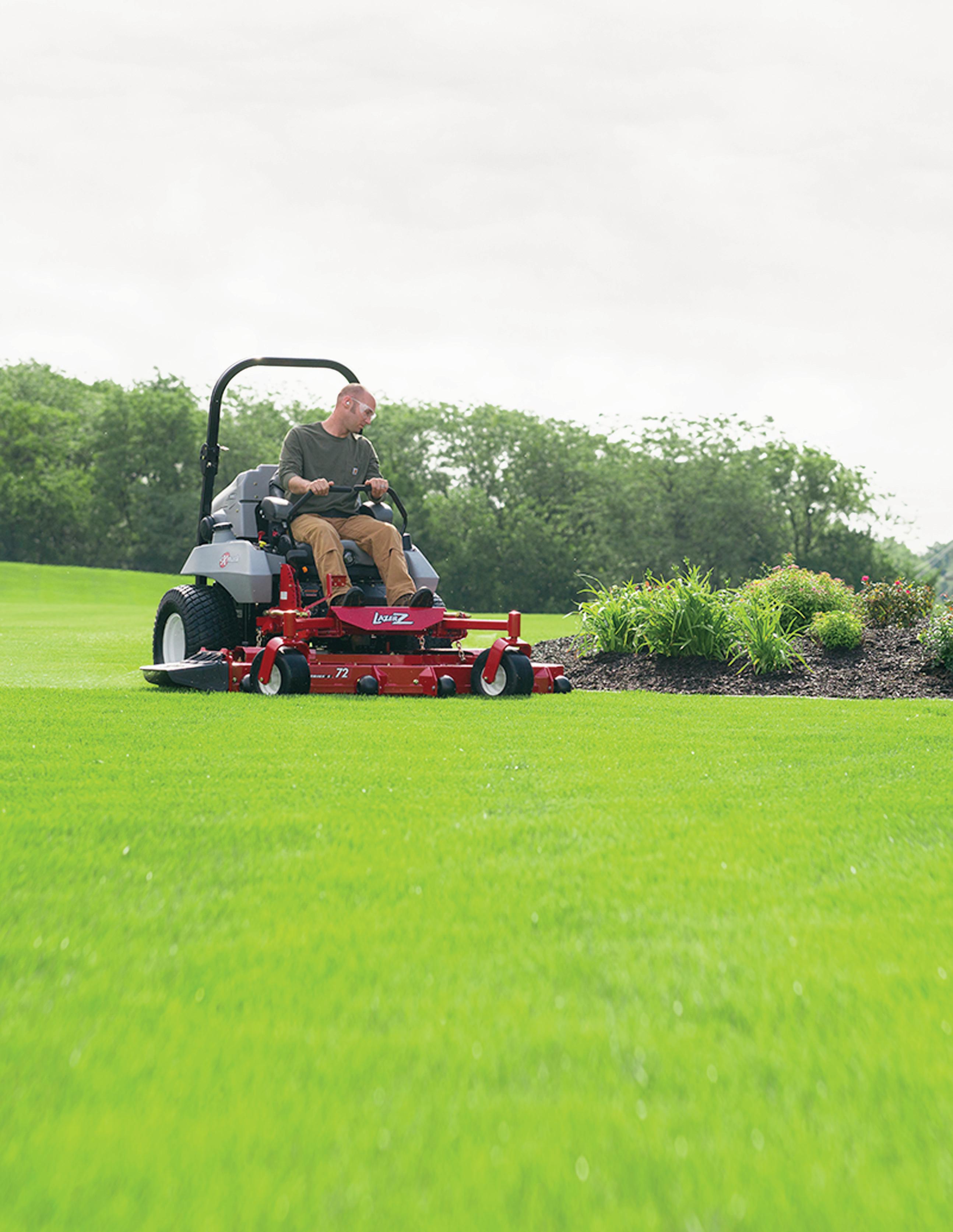
The largest selection of brand names from one trusted source gives you the peace of mind that you’ll be in good hands with your next purchase. Quality Brand Name Products You Can Trust. 1611 N. Fayetteville St. Asheboro, NC 27203 www. AmicksSuperstore .com | 336-672-1196 eXmark Products TimberJak Enduraplas Sprayers Bobcat Buck Stove Cannon Chainsaw Bars Debris Blowers & Clean Up Echo Redmax Felco Pruners Gravely Husqvarna Kohler Pressure Pro Sprayers Shindaiwa Stihl Tecomec Chain Grinders Toro ARS Pruners Qwikchute Wright Commercial Yamaha Outdoor Products Tillers Spyker Spreaders Matabi Sprayers Forestry and Logging Tools PowerCutters & Cut Off Saws
Next, the intended applicator positions the spreader 20 feet away from the tarps ( Figure 7 ) and begins walking at a safe yet briskly consistent pace toward the gap between the tarps. Once up to speed, and no less than 15 feet from the leading edge of both tarps, the applicator should firmly swing open the hopper gate lever while directing the spreader straight through the gap between the tarps ( Figure 8 ). Once aligned with the trailing edge of the tarps, the applicator can close the hopper gate lever. This process should be repeated, always travelling in the original direction, until a measurable quantity of granules is visible on both tarps.
At this time, a measuring tape is used to determine the treatment swath in feet. The outer edge of granules on the tarp should not be considered the boundary of the treatment swath. Rather, it should be used as a guide to locate the outer edge of granules in the turfgrass (along the leading edge of each tarp). The boundary of granules in the turfgrass is what should be used for measurement. If the granules bounced across the tarp, then the outer edge of granules in the turfgrass will rest closer to the gap than the outer edge of granules on the tarp. Place a pin flag to denote the boundary, then repeat using the leading edge of the granules on the other tarp as a guide to locate the outer edge of granules in the turfgrass.


16 North Carolina Turfgrass www.ncturfgrass.org January / February 2023
Cover Story | continued
FIGURE 7 FIGURE 8





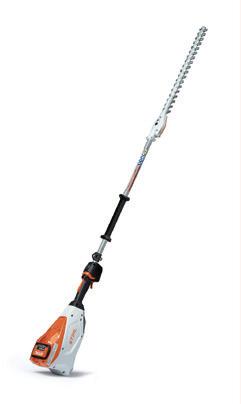
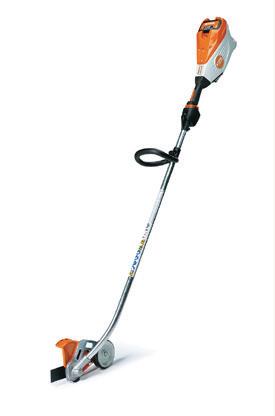



Once set, measure the distance between the two pin flags in feet (Figure 9), and record as the treatment swath. Then retrieve the pin flags and measuring tape. To complete Step 2, divide the treatment swath by two. For example, the treatment swath depicted in Figure 9 is 18 feet. One half the treatment swath is the distance to be maintained between pass centers, or 9 feet in this example. Yes, meeting a 100% overlap goal is just that easy (Figure 10).



Ubiquitous alternatives to the above method are inextricably elaborate, yet poorly supported by experimentally-derived fertilizer distribution from commercial, walk-behind rotary spreaders. Given a treatment swath measuring 18 feet, enter the value of 9 feet into the ‘Distance to be maintained between passes (feet)’ slot of the rotary spreader calibration equation (Figure 11).
Many refer to this method as ‘spreading wheel-to-wheel’ and consider their view of it to be much simpler than mine. Sure, spreading wheel-to-wheel is a simplistic way of saying your next pass center will be made at the edge of where your last pass distributed fertilizer. Conceptually, the wheel-to-wheel directive would indeed amount to a 9-foot distance maintained between pass centers for the Figure 10 example. However, as simple as a directive that may be to one employee, it may prove operationally problematic for another.
18 North Carolina Turfgrass www.ncturfgrass.org January / February 2023
Cover Story | continued
FIGURE 11 FIGURE 9 FIGURE 10

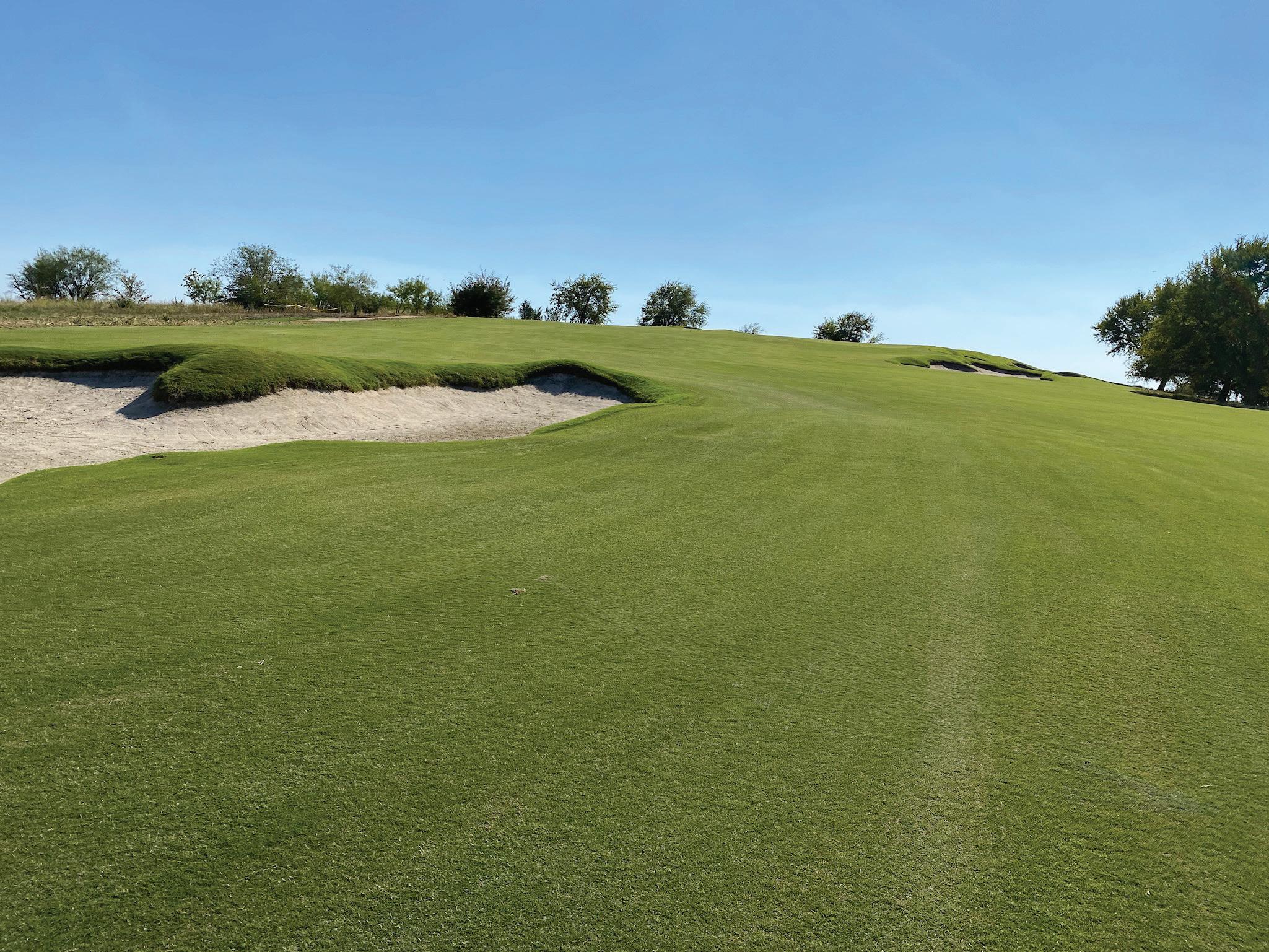



As an assistant superintendent who trained teammates to calibrate a rotary spreader for their use, I felt comfortable identifying the finite distance to maintain between subsequent passes. Effective communicators give directions that are not open to interpretation. Likewise, when critical precision is ultimately required of the planned granular treatment, practitioners can use measuring tape and alternating-colored pin flags to ensure that 9-foot distance is in fact maintained between passes (Figure 12). Without belaboring it further, trust me when I say I’ve collected a lot of data, acquired even more, and run a hundred simulations. All other inanely-complex distribution sampling, plotting, and midpoint calculating steps will not prove more reliable a method as maintaining half the total treatment swath between passes, period. The more diligent the operator is about determining and maintaining this half the treatment swath distance between passes, the more successful the outcome.

Now that you are convinced of that, grab one of the two clean buckets and carefully lift the corners of one tarp to collect all the granules along the middle of one edge. Position the
bucket accordingly and transfer all granules into it, then set that granule-laden bucket safely aside on a stable surface. Repeat the process on the second tarp using the second clean bucket. If the mass of granules in each bucket resides within the operating range of your balance, then carefully determine each mass and record. Alternatively, the volume of granules collected from each tarp can be measured by transferring the granules into a graduated cylinder. Gently tap the filled cylinder to facilitate consistent settling and a uniform bulk density, then carefully determine each volume and record. This information will be used momentarily.
The next step is to mark out a practice run length on representative turfgrass. The length of the practice run should be no less than 25 ft but need not exceed 60 ft. I’ve noticed some industry YouTube videos encourage their subjects to determine the practice run length by dividing 1000 sq. ft. by the number of feet the spreader treatment swath is wide. These folks then go on to present a simplified equation, where the practice run target mass equals the desired fertilizer/amendment rate in lbs per M. Yet the spreader treatment swath width is never again mentioned.
20 North Carolina Turfgrass www.ncturfgrass.org January / February 2023
Cover Story | continued FIGURE
12

So, allow me to briefly support my characterization of this recommendation as highly-suspect, or ‘sus’ as PSU students sometimes say. First, accurate balances and proportional properties of multiplication facilitate precise calibration at reduced scale, i.e., we don’t have to treat 1000 sq. ft. (M) in each practice run to calibrate our rotary spreader to lbs per M.
Second, using a practice run length equal to 1000 divided by the treatment swath width, for the purpose of setting the practice run target mass equal to the desired fertilizer/amendment rate, presumes the treatment swath width distance will be maintained as the distance between pass centers. And while a 0% overlap approach proves adequate when operating a drop spreader, expectations of further versatility are misguided. While all turfgrass scientists may not agree whether rotary spreaders apply granules in a semi-circular, triangular, or trapezoidal distribution across the swath width, I’m pretty certain none are betting the perfectly-rectangular horse.

Getting back on topic, next use paint or pin flags to mark at least one 25- to 60-foot practice run over representative turfgrass. Employ of a calibration kit (Figure 13) facilitates reuse of a single practice run as many times as necessary. If a calibration kit is not available, multiple practice run lengths will be required and any number will be treated by the product at a rate less or greater than the desired application rate. Frankly, it depends on how close your first hopper gate setting guess comes to delivering the target mass.
You will employ pin flags to avoid double treating practice run lengths. If calibrating your rotary spreader to apply a desired rate of pesticide, then you could really use a calibration kit! Otherwise, the area receiving product from iterative practice runs must be accurately described in pesticide application records; and treated areas may not be re-treated in a manner prohibited by the label. Again, one can never be certain how many practice runs will be required, but the number typically exceeds one.

22 North Carolina Turfgrass www.ncturfgrass.org January / February 2023
The third step of rotary spreader calibration
Before I get too far ahead of myself, let’s suppose several practice runs 25 feet in length will be marked in the representative turfgrass area. Insert this value into the ‘Length of practice run (feet)’ slot of the rotary spreader calibration equation and solve for ‘Target lbs fertilizer applied in practice run.’ The resulting target fertilizer mass to be applied over a 25-foot practice run is 2.05 lbs K-Mag (Figure 11). We have now completed over half the rotary spreader calibration steps. A remaining task is committing to either 100 or 200% overlap. Committing to 200% overlap is the more admirable option but requires twice as many traversing passes when making the planned granular treatment. The information I use in the decision rule, and encourage the readers to use as well, is the right-to-left distribution of granules as determined by the tarp collections.




23
A Publication of the Turfgrass Council of North Carolina
continued | Cover Story
FIGURE 13
If the masses or volumes of granules collected from the adjacent tarps were identical (or nearly), then a 100% overlap will suffice in preventing stripe artifacts. This means the calculated ‘practice run target mass= 2.05 lbs K-Mag fertilizer)’ should be employed in the final step (#4).
If the masses or volumes of granules collected from the adjacent tarps were dissimilar; then you may have options for resolving this issue.
If your rotary spreader has a distribution adjustment cone between the hopper and impellor disc, then you can consult the spreader manual and follow the instructions they provide for centering the distribution swath. That’s your Option #2. Using two tarps, this will prove a time-consuming and iterative process without assurance of rewarding outcome.
Using eight to sixteen ‘cake pans’ or ‘egg cartons’ spread across pavement to iteratively center the treatment swath defers a notable sweeping commitment, and is without question the most ludicrously impractical suggestion I have typed this year.
If you agree, or your rotary spreader does not feature a distribution adjustment cone, then consider Option #1:
Calculate the ‘asymmetry ratio’ by dividing the bigger tarp collection value by the smaller. When employing 100% overlap, the extent to which this asymmetry ratio exceeds 4/3 (1.33) correlates directly to the likelihood of striping by way of Issue #2. Thus, to prevent stripe artifacts, practitioners are suggested to employ a 200% overlap when the asymmetry ratio exceeds 1.33. This means the ‘as calculated’ practice run target mass is then further divided by 2, which makes sense given twice as many passes will ultimately be made across the treatment area.
In our example, 247 mL of fertilizer was collected from one tarp and 185 mL collected from the other (Figure 14); resulting in an asymmetry ratio of 247/185= 1.34. Thus a 200% overlap should be employed, making 2.05∕2= 1.025 lbs K-Mag the ‘practice run target mass (lbs fertilizer)’ goal of the final step.

24 North Carolina Turfgrass www.ncturfgrass.org January / February 2023
Cover Story | continued
FIGURE 14
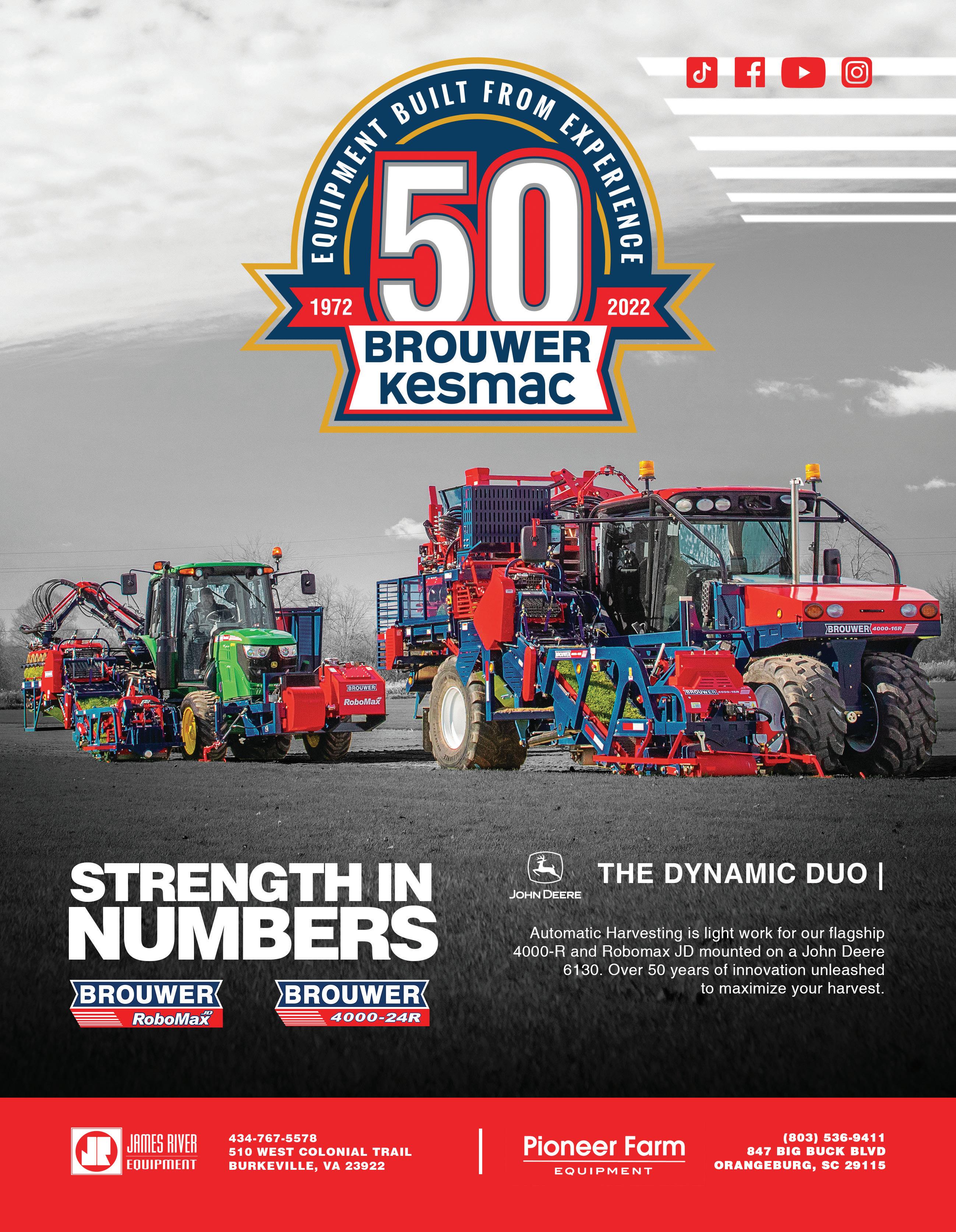
The final step of rotary spreader calibration
Now it is time to iteratively confirm the hopper gate setting satisfies the desired application rate. There are three general ways to do this, selection of the most ideal method will depend on your specific rotary spreader and available ancillary equipment.
I. Volume replacement procedure (good for large, mounted, or tractor-drawn spreaders)
STEP 1. Set the spreader on a (suspected) desirable setting, making sure spreader is off (closed).
STEP 2. Fill the spreader hopper full, or to a clearly marked and repeatable level, with your fertilizer.
STEP 3. With the spreader, begin walking at a typical and constant rate and open the hopper gate at the marked/ flagged starting point, continue over the practice run length, and close the spreader at the appropriate end point.
STEP 4. Return the spreader to the scale vicinity.
STEP 5. Tare a bucket, fill it with the fertilizer material, and weigh and record the material mass.
STEP 6. Use the fertilizer in the bucket to refill the spreader hopper to the original level (Step 2).
STEP 7. Weigh the fertilizer remaining in the bucket.
STEP 8. By subtraction, determine the mass of fertilizer spread while walking. This is fertilizer mass applied per linear distance (at previously walked speed, NOT ANY speed).
STEP 9. Determine if more or less than the target mass was applied, adjust the hopper gate setting accordingly, and repeat.
II. Indirect mass (or remainder) procedure (good for small spreaders that can easily be emptied)
STEP 1. Set the spreader on a (suspected) desirable setting, making sure spreader is off (closed).
STEP 1. Tare a bucket and fill it with the fertilizer material, then weigh & record the material mass.
STEP 3. Carefully, transfer all the fertilizer to the spreader hopper.
STEP 4. Begin walking at a typical and constant rate with the spreader, open the hopper gate at the marked/ flagged starting point, continue over the practice run length, and close the spreader at the appropriate end point.
STEP 5. Carefully transfer the fertilizer remaining inside the spreader hopper to the original tared bucket.
STEP 6. Weigh the fertilizer in the bucket and record its mass.
STEP 7. The difference in fertilizer mass, from before walking the practice run to after, is the fertilizer mass applied per linear distance (at previously walked speed, NOT ANY speed).
STEP 8. Determine if more or less than the target mass was applied, adjust the hopper gate setting accordingly, and repeat.
III. Direct mass measurement (best, but REQUIRES a PENN PRO calibration kit)
STEP 1. Set the spreader on a (suspected) desirable setting, making sure spreader is off (closed).
STEP 2. Install the enclosure kit PROPERLY (covering the spinning rotor plate/impellor disc).
STEP 3. Remove and empty collection pan, place pan on balance, tare to zero, return pan to kit enclosure.
STEP 4. Fill the spreader with an ample quantity of your fertilizer.
STEP 5. Begin walking at a typical and constant rate with the spreader, open the hopper gate at the marked/ flagged starting point, continue over the practice run length, and close the spreader at the appropriate end point.
STEP 6. Carefully collect all the material into the detachable collection pan, ensuring all prills have been collected from the calibration kit enclosure! Failure to recover all fertilizer from the kit will result in improper calibration.
STEP 7. Detach collection pan and weigh. This is the fertilizer mass applied per linear distance (at previously walked speed, NOT ANY speed).
STEP 8. Determine if more or less than the target mass was applied, adjust the hopper gate setting accordingly, and repeat.
Review: When is using a 200% overlap (spreading at ½ rate in two perpendicular directions) appropriate?
1. When the rotary spreader distribution is skew, or heavier on one side than the other; i.e., the asymmetry ratio exceeds 1.33.
2. When applying seed (or a seed/amendment blend) to a bed prepared for turfgrass establishment.
3. When spreading fert./amend. on a windy day.
4. When the desired application rate (lbs fert./amend. per M) exceeds the maximum rate of delivery by the spreader. For instance, when you seek to apply 35 lbs pelletized limestone / M but can only apply 19 lbs pelletized limestone / M with the hopper gate wide-open (and at your typical walking speed). In this event, do not slow down your walking speed to achieve a 35 lbs pelletized limestone / M rate! Instead, maintain your original walking speed (and treatment swath) and calibrate the spreader to apply ½ the original rate (1/2 of 35), or 17.5 lbs pelletized limestone / M. Apply the 35 lbs pelletized limestone / M by making two perpendicular passes over your target area.
26 North Carolina Turfgrass www.ncturfgrass.org January / February 2023 Cover Story | continued




27 WWW.PROGRESSIVETURFEQUIP.COM 800.668.8873 Better Built. Quality Results. Period. Quality built in North America and supported by a world-wide Dealer network. Tri-Deck cutting widths: 12’, 15.5’, 22’*, 36’* Roller Mower cutting widths: 65”, 90”, 10.5’, 12’, 15.5’, 22’*, 29.5’* Contour/rough finishing mower: Pro-Flex™ 120B 10’ cut TDR-X™ roller mower 10.5’ cut Progressive Turf builds the right mowers and rollers for any field. For over 30 years they have set and re-set the standards in commercial grade mowing equipment. Contact your Progressive Dealer to find out why Progressive products are outstanding in any field! * available with bolt-on galvanized deck shells Turf Grass Production Mowers Contour / Rough Finishing Mowers Sports field, Park and Estate Mowers
A Publication of the Turfgrass Council of North Carolina
Become a NC Certified Turfgrass Professional!
The
enhance the technical competency of turfgrass professionals, while elevating their professional image, that of your business and of
Reasons to Begin Earning Your NCCTP Designation Today
The NCCTP program increases and enhances your turfgrass industry knowledge, career, and business development through a course of study of in-depth coverage of the science of turfgrass management.
The NCCTP designation offers immediate confidence and credibility of turfgrass management practices to customers and prospective employers.
Promote and market yourself as a North Carolina Certified Turfgrass Professional.
• Use the NCCTP logo on your business materials.
• Use NCCTP pins, uniform patches, and vehicle decals.
• Your TCNC Member Directory listing is distinguished with the NCCTP logo.
We Are Partnered With The NC State Turfgrass Professional Short Course
The NC State Turfgrass Professional Short Course, a comprehensive turfgrass education program, is offered at select NC State Extension offices and at NC State University.
This Short Course offers a full curriculum of the science of turfgrass management as well as Continuing Education Credits for NCDACS Pesticide and NCLCLB Landscape Contractors’ license holders, and it will help you prepare for the NCCTP exam.
This Short Course is recommended but not required to take the NCCTP exam.
Enrollment Requirements:
Hold a current TCNC membership. If not currently a member, go to www.ncturfgrass.org and click ‘JOIN NOW’ to join online or download an application.
Have a minimum of one full year of work experience in the turfgrass industry.
Agree to the Certified Turfgrass Professional Code of Ethics as detailed on the application form.
Submit:
• A current and valid NC Pesticide Applicators license
• A completed NCCTP application (current TCNC members may apply online).
• NCCTP Program Application: $150
• Self-Study Materials: $50
• Exam Fee: $50
Curriculum and Exam:
Curriculum covers nine core areas: Turfgrass Characteristics; Establishing Turfgrass; Soils & Nutrient Management; Cultural Practices; Pests & Integrated Pest Management; Pesticides & Plant Growth Regulators; Landscape Safety & Pesticide Use; Calculations & Calibration; Turfgrass Business & Economics.
Candidates have six months from the date of their enrollment acceptance to complete the NCCTP exam. Candidates have six hours to complete the exam and must score 80% or more on each section to receive the NCCTP designation.
Exams can be taken at the TCNC office in Raleigh during normal business hours, or arrangements can be made at your local NC State Extension location.
Exams will not be graded if any application information is missing or if TCNC membership status cannot be confirmed. Please allow two to three weeks for exam grading and reports.
Upon successful completion of the exam, candidates will receive communication with their results and either next step options or their graduation packet.
Maintenance Requirements:
Maintain a current TCNC membership as a means of demonstrating ongoing support for the industry.
Submit an annual $50 renewal fee, which supports the NCCTP program and related promotional activities. Designation year is the same as the TCNC membership year, from July 1st to June 30th.
Hold a current NC Pesticide Applicator’s License. Subscribe to, actively support and uphold the TCNC Certification Code of Ethics.
The NC Certified Turfgrass Professional designation (NCCTP), the NCCTP logo and related programs materials are the trademarked property of the Turfgrass Council of North Carolina and cannot be used without TCNC’s written permission.
For additional information, contact TCNC at (919) 459-2070.
28 North Carolina Turfgrass www.ncturfgrass.org January / February 2023
North Carolina Certified Turfgrass Professional (NCCTP) program is a comprehensive program developed to
the turfgrass management industry. Administered by the Turfgrass Council of North Carolina, the NCCTP designation confirms your expertise in turfgrass management to prospective customers and your peers.
Fast Facts about the NCCTP
NCCTP Program
NCCTP Certification Program ENROLLMENT APPLICATION
Name Phone
Address City State Zip E-Mail
TCNC Membership #* Pesticide Applicator License #
QUALIFICATIONS / REQUIREMENTS
Please read the items below and check each one that is true for you.
MEMBERSHIP: I am now, or I am applying here to be, a member in good standing of the Turfgrass Council of North Carolina.
PESTICIDE LICENSE: I hold a current North Carolina Pesticide Ground Applicator License with subclass L, turf, and ornamental (or equivalent from another state).
EXPERIENCE: I have completed a minimum of one full year of turfgrass industry professional work experience.
EXAM: Upon acceptance into the program, I plan to complete my study and take the required exam within six months.
DUTY: I have initialed the following page of this application to show that I strongly support and willingly subscribe to the Certified Turfgrass Professional Code of Ethics, and I pledge to uphold the credibility and integrity of the program.
CONTINUING EDUCATION: I agree to successfully complete additional future curriculum materials or sections that may be required as a result of new technology or regulation.
Company Title Supervisor Supervisor’s Phone Supervisor’s E-Mail Company’s Address City State Zip Work Experience Describe your turfgrass industry professional work experience; one full year is required to apply.
NCCTP Application Fee: $150, Study Materials: $50, Exam Fee: $50, TCNC Dues (call for amount, based on date) Check Number__________________ (payable to TCNC) TOTAL $ Credit Card: AMEX
By signing this application, I verify that all the information is true and correct, I acknowledge and assume full responsibility for the charges on this application, and I agree to honor and abide by the terms of this non-refundable payment.
Signature Date
A
Carolina 29
Publication of the Turfgrass Council of North
Visa MC Discover Billing Zip Code Credit Card # Exp. Date Sec Code Name on Card Signature
Printed Name
CERTIFIED TURFGRASS PROFESSIONAL CODE OF ETHICS
Please read and initial each section below that you support and commit to uphold.
DUTY TO THE PUBLIC
Conduct service first and foremost with regards to the safety, health, and welfare of the general public. Provide service, recommendations, and information based upon honest experience, and scientifically accurate and factual knowledge.
DUTY TO THE ENVIRONMENT
Operate in such a manner to protect and preserve our environment. Use and monitor all equipment, products, and materials in a manner consistent with the label and safe for the environment.
DUTY TO THE LAWS OF OUR LAND
Abide by all laws and regulations affecting the turf industry and support the enforcement of these laws.
DUTY TO OUR FELLOW PROFESSIONALS
Refrain from the use of false, misleading, or deceptive marketing and advertising practices. Practice and insist upon sound business management practices. Maintain the highest standard of personal conduct to reflect credit and add stature to the turf industry. Recognize the importance of strong relationships within the industry. Abstain from untruthful debasement, or encroachment upon, the professional reputation or practice of another turfgrass professional.
DUTY TO THE ASSOCIATION
Participate in association activities and events to help further the profession. Abstain from any unfair exploitation of my association, industry, or profession.
By signing this Code of Ethics, I agree to follow the duties and intentions outlined above, and I commit to supporting and upholding these ethics with consistency and integrity.
Signature
Date
Please Return Entire NCCTP Application To TCNC Via: email: info@ncturfgrass.org fax: (919) 459-2075 or mail: TCNC, 110 Horizon Dr. Ste 210, Raleigh, NC 27615
30 North Carolina Turfgrass www.ncturfgrass.org January / February 2023
I AGREE
AGREE
I AGREE I AGREE I AGREE I
NCCTP Program | continued
Index
Amick's Superstore
www.amickssuperstore.com
Benchmark Buildings and Irrigation
www.BBandI.com
Buy Sod, Inc.
www.buysod.com
Carolina Turf Farms, Inc.
www.carolinaturffarms.com
Divots, Inc.
www.divotssand.com

DMG Turf, Inc.
www.dmgturf.com
Green Resource
www.green-resource.com
Kesmac
www.brouwerkesmac.com

Mid-Atlantic STIHL
www.stihldealers.com
Modern Turf, Inc.
www.modernturf.com
Morgan Sand Company
www.morgansandco.com
Progressive Turf Equipment Inc.
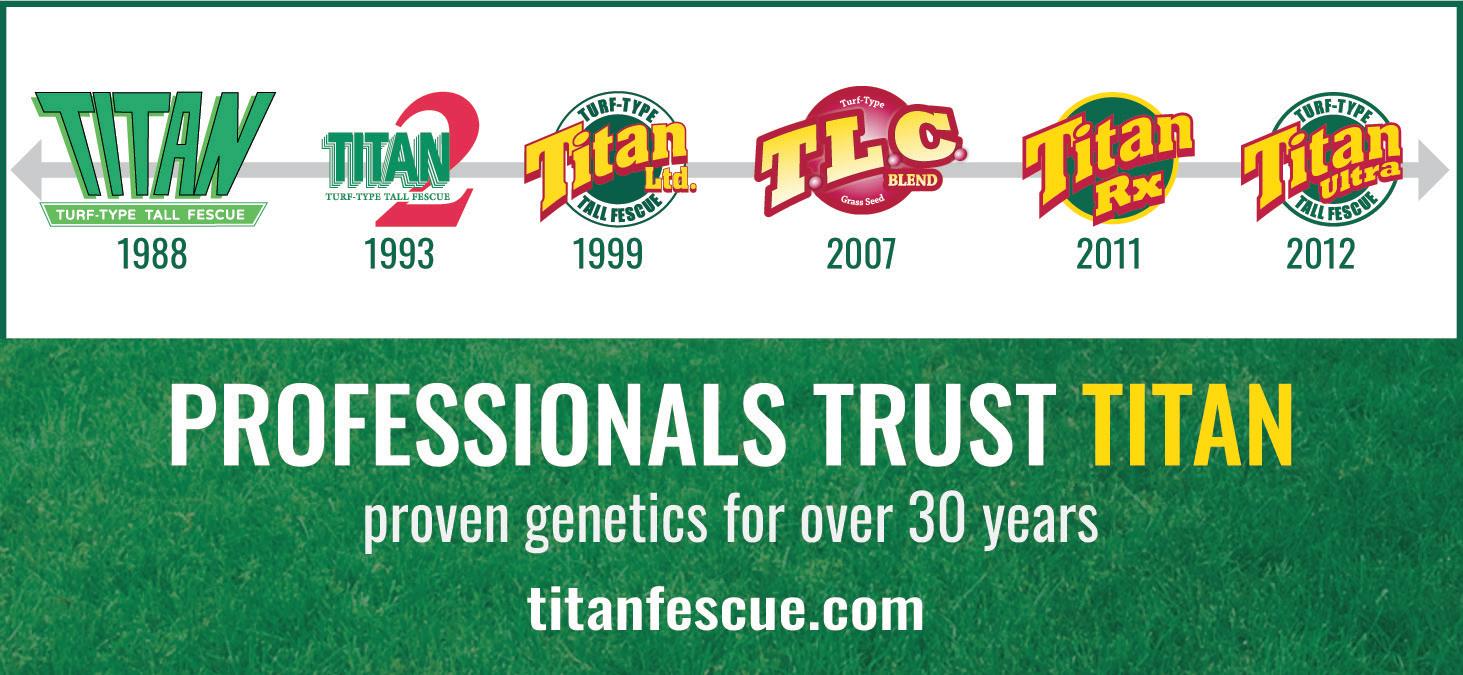
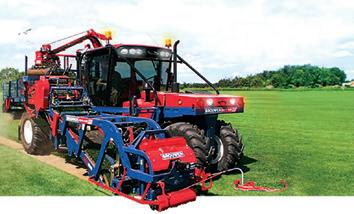
www.progressiveturfequip.com
Quality Turf, Inc.
www.qualityturfnc.com

Smith Seed Services
www.smithseed.com
Smith Turf & Irrigation
www.smithturf.com

Sod Solutions
www.sodsolutions.com
Southern Agricultural Insecticides, Inc.
www.southernag.com
Southern Seeds, Inc.
www.southernseedsinc.com
Southern Specialty Equipment
www.ssequip.net
STEC Equipment


www.stecequipment.com

Super-Sod.........................................................
www.supersod.com
Turf Mountain Sod, Inc.
www.turfmountain.com
Vandemark Farms
www.vandemarkfarms.com
A Publication of the Turfgrass Council of North Carolina 31
of Advertisers
15
.............. 13
.................................................... 9
7
31
21
............................... Back Cover
........................................................... 25
17
22
22
................... 27
............................................ 31
31
3
19
......... 11
23
31
Inside Front Cover
5
................................... 6
27
Website: ssequip.net Email: jim@ssequip.net Mobile: 352-284-8029 New, Used & Refurbished • Ease of Operation • Low Operating Costs • Single Axle Truck Use Solid & Dependable Rotary Finishing Mowers Over 50 Years of Harvesting Innovation Office: 877-366-5399 Southern Specialty Equipment, Inc. Digital Marketplace Ron Hall, Sr Cell – 919-775-8634 Ron Hall, Jr Cell - 919-775-9732 sales@divotssand.com www.DivotsSand.com Scan the QR Code to learn more about this company.



















































































